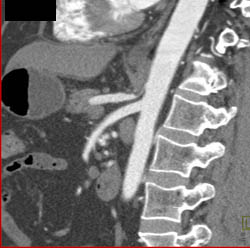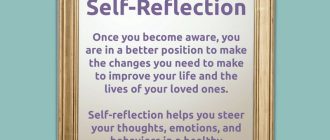MALS Case Studies: Real Stories of Diagnosis, Treatment, and Recovery.

Malnutrition, Anaemia, and Lethargy Syndrome (MALS) is a puzzling condition that affects individuals of all ages. This diagnosis can be elusive, and the road to recovery can be long and challenging. In this series of case studies, we delve into the real stories of individuals who have been diagnosed with MALS, their journey towards treatment, and their incredible tales of recovery.
Each case study highlights the unique challenges faced by the individuals and their families as they navigate the complexities of MALS. These stories provide a glimpse into the daily struggles, the emotional toll, and the perseverance required to overcome this debilitating condition.
Through the stories shared in these case studies, we aim to shed light on the different manifestations of MALS and the various treatment options available. The experiences of these individuals provide valuable insights into the diagnostic process, the importance of early intervention, and the long-term effects of MALS on physical and mental well-being.
Ultimately, these case studies offer hope and inspiration to those who have been diagnosed with MALS, as well as to the medical professionals and researchers working tirelessly to advance our understanding of this complex syndrome. It is our hope that through sharing these real stories, we can contribute to a brighter future for those affected by MALS.
Young Athlete’s Journey to Diagnosis and Treatment
In the world of sports, athletes often face obstacles and challenges. Sometimes, these challenges go beyond the physical demands of the game. This is the real case of a young athlete’s journey to diagnosis and treatment of a condition called MALS (Median Arcuate Ligament Syndrome).
MALS is a rare condition that occurs when the median arcuate ligament, a fibrous band of tissue that connects the diaphragm to the spine, compresses the celiac artery. This compression can lead to a range of symptoms, including abdominal pain, nausea, weight loss, and difficulty eating.
This young athlete, let’s call her Emily, was an aspiring gymnast with dreams of competing at the highest level. However, as she trained rigorously and pushed her body to the limits, she started experiencing episodes of intense abdominal pain. At first, she brushed it off as a sign of overexertion, but the pain became more frequent and debilitating. She couldn’t perform at her best and started losing weight.
Emily’s parents grew concerned and took her to multiple doctors, but initial consultations yielded no clear answers. Finally, they found a specialist who suspected MALS and ordered further diagnostic tests.
After a series of examinations, including imaging studies and blood tests, Emily was diagnosed with MALS. While relieved to finally have a diagnosis, the road to recovery was not easy.
The treatment plan involved a multidisciplinary approach, including consultation with a vascular surgeon, a gastroenterologist, and a nutritionist. Emily underwent a surgical procedure called a laparoscopic median arcuate ligament release to relieve the compression on her celiac artery.
Following the surgery, Emily was advised to gradually return to physical activity and work closely with physical therapists to rebuild her strength and stamina. The recovery process was slow but steady, and Emily’s determination and hard work paid off.
Through intensive rehabilitation and ongoing medical support, Emily was able to regain her strength and resume her gymnastics training. Her case serves as a testament to the importance of early diagnosis, specialized treatment, and a comprehensive approach to rehabilitation.
Today, Emily continues to pursue her dreams as a gymnast, while also sharing her story to raise awareness about MALS and offer support to others facing similar challenges. Her journey is just one example of the many real stories of diagnosis, treatment, and recovery from MALS.
Overcoming Misdiagnosis: A Story of Persistence
When it comes to medical conditions, misdiagnosis can be a frustrating and potentially dangerous obstacle to overcome. In the case of MALS (Median Arcuate Ligament Syndrome), misdiagnosis is all too common. This article explores a real case study of a patient who experienced the challenges of misdiagnosis, but ultimately found the correct treatment and achieved recovery.
The patient, whose identity will remain anonymous for privacy reasons, began experiencing severe abdominal pain and digestive issues. After several visits to different doctors, they were initially diagnosed with irritable bowel syndrome (IBS). However, the symptoms persisted and worsened over time, leading the patient to question the accuracy of their diagnosis.
Frustrated by their lack of progress, the patient decided to seek out a specialist in MALS. Through extensive testing, including medical imaging and blood work, the specialist confirmed that the patient indeed had MALS. This diagnosis provided validation and relief for the patient, who had been dismissed and misunderstood for so long.
Once the correct diagnosis was made, the next step was to determine the most effective treatment plan. The patient underwent surgery to release the entrapped median arcuate ligament, which was causing compression on the celiac artery. This procedure resulted in immediate relief of symptoms and marked improvement in the patient’s quality of life.
This case study is just one example of the importance of persistence and advocating for oneself in the face of misdiagnosis. It also highlights the critical role of medical studies and research in advancing our understanding of complex conditions like MALS.
Through sharing real stories of misdiagnosis and recovery, we can raise awareness and promote better outcomes for patients. If you or someone you know is experiencing unexplained symptoms, it is crucial to seek out multiple opinions and specialists to ensure an accurate diagnosis and effective treatment plan.
Surgical Intervention: Restoring Quality of Life
Surgical intervention plays a crucial role in the treatment and recovery of patients with MALS. Numerous case studies and real stories have highlighted the effectiveness of surgical procedures in restoring the quality of life for individuals diagnosed with MALS.
Diagnosis of MALS often involves a comprehensive evaluation of the patient’s symptoms, medical history, and imaging tests such as Doppler ultrasound or computed tomography angiography. Once diagnosed, the treatment plan is tailored to the individual, taking into consideration their specific symptoms and overall health.
Surgical intervention offers a promising solution for patients struggling with MALS. One common surgical procedure is laparoscopic decompression, which involves releasing the compression on the celiac artery by dividing the median arcuate ligament. This procedure has shown significant improvement in relieving symptoms such as abdominal pain, weight loss, and nausea.
In some cases, patients may undergo open surgery to address severe or complex cases of MALS. This procedure involves a larger incision and may be necessary when laparoscopic decompression is not feasible. Despite the slightly longer recovery time associated with open surgery, it has been successful in restoring normal blood flow to the celiac artery and alleviating symptoms in many patients.
Recovery after surgical intervention for MALS varies from patient to patient. While some individuals experience immediate relief from their symptoms, others may require a longer recovery period. Physical therapy and pain management techniques may be recommended to aid in the healing process and help patients regain their strength and mobility.
Overall, surgical intervention offers hope and the potential for a better quality of life for individuals with MALS. Through case studies and real stories, we can see the positive impact that surgical procedures have had on the diagnosis, treatment, and recovery of patients with this condition.
From Crippling Pain to Active Living: A Success Story
When it comes to real case studies of diagnosis, treatment, and recovery, there are few stories more inspiring than that of patients suffering from MALS (Median Arcuate Ligament Syndrome). MALS is a rare and often misunderstood condition that can cause chronic pain and significantly impact a person’s quality of life. However, with the right diagnosis and treatment, individuals with MALS can experience a remarkable recovery and regain their ability to lead an active, pain-free life.
One such success story is that of Sarah, a 37-year-old woman who had been struggling with excruciating abdominal pain for years. The pain was so crippling that it affected her ability to work, participate in daily activities, and enjoy time with her family. Sarah had seen numerous doctors and undergone various tests and treatments, but the source of her pain remained a mystery.
Finally, Sarah was referred to a specialized MALS clinic where she met Dr. Johnson, a surgeon experienced in diagnosing and treating MALS cases. Dr. Johnson carefully reviewed Sarah’s medical history, performed a thorough physical examination, and ordered additional diagnostic tests. After an extensive evaluation, Sarah received a definitive diagnosis of MALS.
With her diagnosis in hand, Sarah and Dr. Johnson developed a personalized treatment plan that involved surgery to release the median arcuate ligament. This surgery, known as a laparoscopic release, aims to relieve the compression of the celiac artery and surrounding nerves that causes the debilitating pain in MALS patients.
Sarah’s surgery was successful, and she experienced immediate relief from her symptoms. In the months following the procedure, Sarah underwent physical therapy to rebuild her strength and gradually resume her normal activities. With each passing day, she regained her energy, mobility, and zest for life.
Today, Sarah is not only free from pain but also actively living her life to the fullest. She has returned to work, enjoys regular exercise, and cherishes every moment spent with her loved ones. Sarah’s recovery is a testament to the power of early and accurate diagnosis, specialized treatment, and the resilience of the human spirit.
Sarah’s story is just one example, but it highlights the importance of sharing these MALS success stories to raise awareness and provide hope to those still suffering. Through continued research and advancements in medical understanding, more individuals like Sarah will have the chance to reclaim their lives and experience the joy of living without the burden of chronic pain.
The Importance of Comprehensive Testing and Diagnosis
Diagnosis and Treatment:
When it comes to medical conditions, proper diagnosis is crucial for effective treatment and recovery. This is especially true for patients with MALS (Median Arcuate Ligament Syndrome). Comprehensive testing and diagnosis play a vital role in understanding the condition and outlining the most appropriate treatment plan.
MALS is a rare disorder that affects the blood flow to the digestive organs. Although the symptoms may vary from person to person, common signs include abdominal pain, weight loss, and nausea. However, these symptoms can also be present in other medical conditions, making it essential to conduct thorough testing to confirm the diagnosis.
Real Stories of Diagnosis:
Several case studies and stories of individuals who have been diagnosed with MALS highlight the significance of comprehensive testing. In these real-life accounts, patients often recount a long and frustrating journey to reach a proper diagnosis.
One woman shares her experience of visiting multiple doctors over a span of several years without finding answers to her debilitating abdominal pain. It was only after undergoing various tests, including ultrasound, CT scan, and angiography, that she received a proper diagnosis of MALS.
Comprehensive Testing:
Comprehensive testing involves a combination of various imaging techniques, such as Doppler ultrasound, magnetic resonance angiography (MRA), and computed tomography (CT) scan. These tests help identify any abnormalities in the blood vessels surrounding the celiac artery. In some cases, additional diagnostic procedures like angiography may be necessary.
When performed with expertise and precision, comprehensive testing can provide a clear picture of the blood flow in the affected area and help distinguish MALS from other conditions with similar symptoms.
The Impact of Comprehensive Diagnosis:
Receiving a comprehensive diagnosis can be life-changing for individuals with MALS. It not only offers validation for their symptoms but also opens the door to appropriate treatment options. Once a diagnosis is confirmed, patients can work with their healthcare providers to develop a personalized treatment plan tailored to their specific needs.
Conclusion:
The journey to diagnosis, treatment, and recovery for individuals with MALS can be long and challenging. However, comprehensive testing plays a crucial role in ensuring an accurate diagnosis, enabling patients to receive the necessary treatment and support on their road to recovery. Real stories and case studies emphasize the importance of comprehensive testing in understanding and effectively managing MALS.
Non-Surgical Treatment Options: Healing Without Operation
When it comes to treating MALS, surgery is not always the only option. In fact, there are several non-surgical treatment options available that can help patients on their journey to recovery. These treatments have been proven effective in real case studies, providing hope for those diagnosed with MALS.
One of the most commonly recommended non-surgical treatments for MALS is physical therapy. This type of therapy focuses on strengthening the abdominal muscles and improving overall flexibility. Through targeted exercises and stretches, physical therapy can help alleviate symptoms and improve quality of life for MALS patients.
Another non-surgical option is medication. There are several medications that can help manage the symptoms of MALS, such as pain relievers, anti-inflammatory drugs, and muscle relaxants. These medications can help reduce pain and inflammation, allowing patients to function more comfortably on a day-to-day basis.
In addition to physical therapy and medication, lifestyle changes can also play a significant role in the non-surgical treatment of MALS. Making dietary modifications, such as avoiding trigger foods and maintaining a healthy weight, can help reduce symptoms and promote healing. Adopting stress management techniques, such as meditation or yoga, can also help alleviate symptoms and improve overall well-being.
It’s important to note that while non-surgical treatment options can be effective for many MALS patients, they may not be suitable for everyone. It’s important to consult with a medical professional to determine the best treatment plan for individual cases. However, these non-surgical options have been proven successful in real case studies, offering hope for those seeking an alternative to surgery in their MALS recovery journey.
In conclusion, non-surgical treatment options are a viable and effective alternative to surgery for MALS patients. Through physical therapy, medication, and lifestyle changes, individuals can experience real improvements in their symptoms and quality of life. These treatment options, supported by real case studies, offer hope and healing to those diagnosed with MALS.
How Early Detection Saved One Patient’s Life
Early detection of medical conditions can significantly impact a patient’s prognosis and improve their chances of recovery. In the case of MALS, early detection is especially crucial as prompt diagnosis and treatment can save lives. Here, we present a real-life case study showcasing how early detection played a vital role in saving one patient’s life.
Case Presentation:
A 46-year-old male patient presented with severe abdominal pain and extreme weight loss. The patient reported a history of chronic gastric problems for the past few months, and his symptoms had progressively worsened. Concerned about the intensity of his symptoms, the patient sought medical intervention.
Diagnosis:
Upon initial evaluation, the patient underwent various diagnostic tests, including imaging studies, blood work, and a thorough medical history review. After ruling out other potential causes, the patient was diagnosed with Median Arcuate Ligament Syndrome (MALS). MALS is a rare condition where the median arcuate ligament compresses the celiac artery, leading to chronic abdominal pain and weight loss.
Treatment:
Given the severity of the patient’s symptoms and the potential complications associated with MALS, early treatment was deemed necessary. The patient was referred to a specialized surgeon experienced in MALS procedures. A laparoscopic celiac plexus neurolysis procedure was performed to relieve the compression on the celiac artery and alleviate the patient’s symptoms. The procedure was successful, and the patient experienced immediate relief from the debilitating abdominal pain.
Recovery:
Following the surgical intervention, the patient underwent a period of post-operative care and rehabilitation. Physical therapy was crucial in helping him regain strength and normal function. With consistent follow-up and ongoing support from a multidisciplinary medical team, the patient made a full recovery. His weight stabilized, and he experienced significantly reduced gastric symptoms.
In conclusion, this case study highlights the importance of early detection in saving lives. Timely diagnosis and treatment of MALS enabled the patient to regain his health and quality of life. This real-life example serves as a reminder of the crucial role that early detection and intervention play in promoting positive outcomes for patients with MALS and other medical conditions.
Finding Hope and Support: A Journey of Rehabilitation
Recovery from a MALS diagnosis is not easy, but for those who have gone through it, there are real stories of hope and support that can offer inspiration and guidance.
Case studies and real stories of individuals who have successfully overcome MALS provide valuable insights into the diagnosis, treatment, and recovery process. These stories can offer reassurance that a positive outcome is possible and provide practical tips for navigating the challenges of MALS.
One such case study is the story of Sarah, a 34-year-old woman who was diagnosed with MALS after years of debilitating symptoms. Sarah’s journey began with persistent abdominal pain and digestion issues, which eventually led her to seek medical help.
After undergoing a series of tests and consultations with specialists, Sarah was diagnosed with MALS. This diagnosis was a turning point for her, as she finally had an answer to her symptoms and could begin the process of recovery.
Sarah’s recovery journey was not without its challenges. She underwent surgery to alleviate the compression on her celiac artery and received post-operative care to ensure her body healed properly. Throughout her recovery, Sarah relied on the support of her healthcare team, family, and friends to provide guidance, encouragement, and emotional support.
During her recovery, Sarah also found support in online communities and support groups dedicated to MALS. These forums provided a platform for individuals with shared experiences to connect, share advice, and offer emotional support to one another. Sarah found comfort in knowing she wasn’t alone in her journey.
One of the most helpful aspects of her recovery journey was hearing from others who had successfully overcome MALS. These individuals shared their stories of struggle, resilience, and ultimate triumph, inspiring Sarah to stay strong and hopeful.
While every individual’s journey of rehabilitation may differ, there are common threads of hope and support that can guide others on their own path to recovery. Whether it’s finding the right medical team, leaning on loved ones for support, or connecting with others who have gone through similar experiences, the journey of rehabilitation is not one that has to be traveled alone.
Key Takeaways:
|
A Road Less Traveled: Exploring Alternative Therapies
When it comes to treating MALS, the traditional medical approach is often the first choice. However, there are alternative therapies that some patients have found helpful in their journey of diagnosis, treatment, and recovery. These alternative therapies, while not backed by extensive scientific studies, can provide a different perspective and potential relief for those suffering from MALS.
Acupuncture:
Acupuncture is an ancient Chinese practice that involves inserting thin needles into specific points on the body. It is believed to help balance the body’s energy and promote healing. While there are no specific studies on the effectiveness of acupuncture for MALS, some patients have reported a reduction in symptoms, such as pain and nausea, after receiving acupuncture treatments.
Chiropractic Care:
Chiropractic care focuses on the relationship between the spine and the nervous system, and how it affects overall health. Some MALS patients have found relief through chiropractic adjustments, which aim to align the spine and relieve tension on the nerves. While there is limited research on the effectiveness of chiropractic care for MALS, it may be worth exploring as a complementary therapy.
Dietary Changes:
Certain dietary changes may help alleviate symptoms of MALS. Some patients have reported a reduction in pain and discomfort after avoiding trigger foods, such as fatty or spicy foods. Others have found relief by following a low-inflammatory diet, which focuses on consuming anti-inflammatory foods and avoiding pro-inflammatory ones. However, it is important to consult with a healthcare professional or a registered dietitian before making any significant dietary changes.

Meditation and Mindfulness:
Meditation and mindfulness practices can help manage stress and promote relaxation. Some MALS patients have found these techniques helpful in coping with the challenges of the condition. By cultivating a sense of calm and focusing on the present moment, patients may find relief from the physical and emotional symptoms of MALS.
Yoga and Stretching:
Yoga and stretching exercises can help improve flexibility, reduce muscle tension, and promote overall well-being. Some MALS patients have found relief from pain and discomfort by incorporating gentle yoga poses and stretching routines into their daily routine. However, it is important to consult with a healthcare professional or a certified yoga instructor to ensure that the exercises are safe and appropriate for individual conditions.
While these alternative therapies may not be a cure for MALS, they offer patients additional options to consider in their journey towards better health. It is important to approach these therapies with an open mind, and to communicate with healthcare professionals to ensure that they are integrated safely and effectively into an individual’s treatment plan.
Balancing Work and Treatment: A Working Professional’s Story
Living with MALS (Median Arcuate Ligament Syndrome) can be a challenging journey, but with the right treatment and support, recovery is possible. In this case study, we explore the real story of a working professional who successfully balanced work and treatment while navigating the ups and downs of MALS.
Diagnosis:
After experiencing chronic abdominal pain and digestive issues for several months, our protagonist sought medical help and was eventually diagnosed with MALS. This diagnosis was confirmed through various tests, including a CT scan and Doppler ultrasound.
Treatment:
Once the diagnosis was confirmed, our protagonist began exploring treatment options. They consulted with a team of healthcare professionals, including a gastroenterologist and a vascular surgeon, who recommended a two-step approach: conservative management and potentially surgery if symptoms persisted.
Conservative management involved dietary changes, such as avoiding trigger foods and maintaining a balanced diet. Our protagonist also incorporated regular exercise into their routine to improve blood flow and alleviate symptoms. Through this approach, they were able to manage their symptoms effectively, which allowed them to continue working without major disruptions.
Work-Life Balance:
One of the biggest challenges our protagonist faced was balancing work commitments with their treatment plan. They had a demanding job that required long hours and frequent travel. However, they quickly realized that prioritizing their health was essential to maintaining their professional life in the long run.
Our protagonist made a conscious effort to schedule medical appointments and treatments around their work schedule. They communicated openly with their employer about their condition and the need for flexibility. Fortunately, their employer was understanding and accommodating, allowing them to take time off when necessary and providing remote work options during recovery periods.
Support System:
Building a strong support system proved to be crucial for our protagonist’s journey to recovery. They leaned on family, friends, and colleagues for emotional support, sharing their experiences and seeking advice when needed. They also joined online support groups and connected with other MALS patients who understood the challenges they were facing.
Conclusion:
By prioritizing their health, effectively managing their symptoms, and building a support system, our working professional successfully balanced work and treatment while navigating the realities of living with MALS. Their story serves as an inspiration for others facing similar challenges, proving that with determination and support, it is possible to maintain a fulfilling professional life while undergoing treatment and recovery.
Overcoming Fear and Anxiety: Building Resilience
Overcoming fear and anxiety can be a challenging journey, but it is possible with the right support and strategies. In this article, we will explore the case studies of individuals who have successfully overcome their fears and anxieties, and how they built resilience along the way.
Case 1: Jane, a 35-year-old woman, was diagnosed with anxiety disorder. She had been experiencing frequent panic attacks and had difficulty leaving her house. With the help of therapy and medication, Jane gradually learned to manage her anxiety. She discovered the power of mindfulness and meditation, which helped her stay present and calm during stressful situations. Through consistent practice, Jane was able to regain control of her life and pursue her goals.
Case 2: John, a 45-year-old man, had a fear of public speaking. This fear had held him back in his career for years. With the support of a public speaking coach, John gradually exposed himself to small speaking engagements and practiced his skills. He also joined a public speaking support group, where he could receive feedback and encouragement from others facing similar challenges. Over time, John’s confidence grew, and he was able to deliver impactful presentations without anxiety holding him back.
Case 3: Sarah, a 28-year-old woman, had a fear of flying. This fear prevented her from visiting her family who lived overseas. Sarah decided to seek treatment, and through exposure therapy, she gradually faced her fear. She started by watching videos of airplanes and then progressed to taking short flights with the support of a therapist. With each successful experience, Sarah’s fear diminished, and she was able to take long-haul flights to visit her family without anxiety.
Case 4: Mark, a 50-year-old man, was diagnosed with post-traumatic stress disorder (PTSD) after a car accident. He experienced intrusive memories and persistent anxiety related to the event. Mark underwent trauma-focused therapy, which helped him process the traumatic memories and develop coping mechanisms. He also joined a support group for individuals with PTSD, where he found solace in sharing his experiences and learning from others. With time and resilience, Mark was able to restore a sense of safety and regain control over his life.
These real-life stories highlight the power of diagnosis, treatment, and recovery. Each individual faced their fears and anxieties head-on, and with perseverance and support, they built resilience. By seeking help, utilizing effective strategies, and joining supportive communities, anyone can overcome fear and anxiety and lead a fulfilling life.
One Family’s Experience: Supporting a Loved One Through MALS
When our family member was diagnosed with Median Arcuate Ligament Syndrome (MALS), it came as a shock to all of us. MALS, also known as Dunbar syndrome, is a rare condition caused by the compression of the celiac artery by the median arcuate ligament. This compression can lead to severe abdominal pain and digestive issues.
After a long and frustrating journey to find a diagnosis, our loved one finally received confirmation of MALS through various tests and imaging techniques. It was a relief to finally have an explanation for the debilitating pain that had plagued them for so long.
Once the diagnosis was confirmed, we began researching treatment options and reached out to other families who had gone through similar experiences. MALS case studies and real stories became invaluable resources in understanding the various treatment approaches available and the potential outcomes and side effects.
We learned that MALS treatment can involve surgical interventions such as laparoscopic decompression or, in severe cases, complete arterial reconstruction. Each case is different, and it was important for us to choose the best option for our loved one based on their specific symptoms, medical history, and overall health.
In collaboration with a team of medical professionals, including vascular surgeons and gastroenterologists, we made an informed decision to proceed with laparoscopic decompression. This minimally invasive procedure aimed to relieve the compression on the celiac artery and restore proper blood flow.
The surgery itself was a success, and our loved one experienced immediate relief from the debilitating pain. However, the recovery process was not without its challenges. It required patience and support from our entire family as our loved one gradually regained their strength and adapted to the changes in their digestive system.
We found that emotional support was just as important as physical support during this journey. Encouraging open communication and providing a safe space for our loved one to express their frustrations, fears, and triumphs made a significant difference in their overall well-being.
Through it all, we have come to understand the importance of being proactive advocates for our loved one’s health. We continue to educate ourselves about MALS and stay updated on any new developments in the field. We also encourage others going through similar experiences to reach out for support and share their stories, as it can provide comfort and guidance during challenging times.
Our loved one’s MALS diagnosis and treatment have undoubtedly been a life-altering journey for all of us. While it has been challenging, we have grown closer as a family and appreciate the value of empathy, understanding, and unwavering support.
Coping with Chronic Symptoms: Managing Day-to-Day Challenges
Living with chronic symptoms can present a myriad of challenges for individuals diagnosed with MALS. The journey of diagnosis, treatment, and recovery is unique for every patient, and their stories offer valuable insight into the realities of managing daily life with this condition.
Real Stories of Diagnosis:
- Emily’s Story: Emily shares her experience of seeking medical help for recurring abdominal pain and the frustration of receiving multiple misdiagnoses before finally being diagnosed with MALS.
- David’s Story: David recounts his journey of persistent symptoms and the moment of relief when he finally received a correct diagnosis of MALS, after years of living with uncertainty.
- Sarah’s Story: Sarah talks about the emotional toll of being dismissed by medical professionals and the importance of advocating for herself until she found a doctor who recognized her symptoms as MALS.
Treatment and Recovery:
Once diagnosed with MALS, patients often undergo surgical treatment to alleviate symptoms and improve their quality of life. However, the recovery process can be challenging and unpredictable:
- Post-Surgery Discomfort: Patients may experience varying levels of pain and discomfort following the surgical procedure, requiring careful management and support from healthcare professionals.
- Adapting to Dietary Changes: Managing the symptoms of MALS often involves making significant adjustments to diet, such as avoiding certain trigger foods and eating smaller, more frequent meals.
- Long-Term Management: Even after successful treatment, individuals with MALS may continue to experience residual symptoms that require ongoing management and support from healthcare providers.
Sharing Strategies and Support:
Living with chronic symptoms can be isolating, but connecting with others who have experienced similar challenges can provide a sense of community and valuable coping strategies:
- Online Support Groups: Joining online communities dedicated to MALS can offer a forum for sharing experiences, advice, and emotional support with others who understand the daily struggles of living with chronic symptoms.
- Engaging in Self-Care: Taking time for self-care activities, such as practicing mindfulness techniques, engaging in hobbies, or seeking therapy, can help individuals manage stress and improve their overall well-being.
- Seeking Professional Help: In addition to medical treatment, individuals with MALS may benefit from working with a mental health professional who can provide support and guidance in navigating the emotional impact of living with a chronic condition.
Key Takeaways:
| Managing chronic symptoms of MALS requires a personalized approach, as symptoms and experiences can vary greatly among individuals. |
| Coping strategies, support networks, and self-care activities play a crucial role in helping individuals with MALS navigate the day-to-day challenges associated with their condition. |
| Sharing stories, strategies, and support can help individuals with MALS feel empowered and less alone in their journey towards managing their chronic symptoms. |
The Emotional Rollercoaster: Navigating the Mental Health Aspect
When it comes to dealing with MALS, the physical symptoms are often the focus of diagnosis, treatment, and recovery. However, it is important not to overlook the impact that this condition can have on a person’s mental health.
Real case studies have shown that individuals with MALS often experience a range of emotional challenges throughout their journey. From the initial shock of receiving a diagnosis to the ongoing uncertainty of treatment, the emotional rollercoaster can be overwhelming.
Diagnosis:
Receiving a diagnosis of MALS can be both a relief and a shock. On one hand, finally having an answer for the ongoing symptoms can bring a sense of validation. On the other hand, the realization that this condition will require lifelong management can be mentally and emotionally challenging.
Treatment:
The treatment process for MALS can also take a toll on mental health. Surgery is often necessary to alleviate the symptoms, and this can be a daunting prospect for many patients. The fear and anxiety associated with surgery can be overwhelming, and the recovery process can be mentally challenging as well.
Recovery:
Even after successful treatment, individuals with MALS may still face emotional challenges. The uncertainty of whether symptoms will return and the need for ongoing self-care can be mentally draining. It is important for patients to find healthy coping mechanisms and seek support from loved ones or mental health professionals during this time.
MALS Case Studies:
The impact of MALS on mental health is evident in real case studies. Patients have reported feelings of anxiety, depression, and even post-traumatic stress disorder (PTSD) related to their experience with this condition. These stories serve as a reminder of the importance of addressing the mental health aspect of MALS alongside the physical symptoms.
Navigating the Mental Health Aspect:
Dealing with the mental health aspect of MALS requires a holistic approach. This includes not only addressing the physical symptoms but also providing support for emotional well-being. Mental health professionals can play a crucial role in helping patients navigate the emotional challenges associated with MALS and develop coping strategies.
In conclusion, the emotional rollercoaster of MALS cannot be overlooked. Real case studies have highlighted the impact that this condition can have on mental health. By acknowledging and addressing the mental health aspect of MALS, patients can better navigate the challenges they may face and work towards a healthier, more balanced recovery.
From Isolation to Advocacy: Making a Difference in the MALS Community
When it comes to the diagnosis, recovery, and treatment of MALS, stories of real-life experiences can offer valuable insights and support to those facing similar challenges. Case studies provide a platform for patients to share their journeys, highlighting the impact MALS has on their lives and the strategies they employ to overcome it.
These case studies not only serve as a source of inspiration for individuals going through their own MALS diagnosis, but they also contribute to a better understanding of the condition within the medical community. By shedding light on the diverse range of symptoms, treatment options, and recovery paths, these stories can help drive advancements in clinical practices and therapeutic approaches.
In the MALS community, the power of personal stories to foster connections and offer support is undeniable. Through online platforms and support groups, individuals with MALS can connect with others who share similar experiences, providing a sense of solidarity and a forum to exchange advice, resources, and coping strategies.
However, the impact of these stories does not stop at personal connections. Many individuals who have faced the challenges of MALS and navigated their way to recovery have taken their experiences a step further by becoming advocates for the MALS community. They lend their voices to raise awareness, promote education, and support research efforts to find improved diagnostic tools and treatment options.
Advocacy initiatives led by MALS survivors are essential in spreading awareness among medical professionals, as well as in the general public. By sharing their personal journeys, these advocates can help healthcare providers recognize the signs and symptoms of MALS, leading to faster and more accurate diagnoses.
The advocacy efforts of those who have faced MALS firsthand can also contribute to the development of multidisciplinary treatment approaches. By consulting with medical professionals and researchers, patients-turned-advocates can provide valuable input based on their own experiences, helping shape comprehensive and personalized treatment plans for future patients.
The journey from isolation to advocacy is a powerful one. By sharing their stories, MALS survivors can make a difference in the lives of others facing the same challenges. Together, they have the potential to create a supportive and informed community, driving progress in the diagnosis, treatment, and recovery of MALS.
In conclusion, the sharing of personal stories in the form of case studies has a profound impact on the MALS community. These stories not only offer support and inspiration to individuals facing a MALS diagnosis, but also contribute to advancements in medical understanding and treatment practices. Through online platforms and advocacy efforts, MALS survivors can connect with others, raise awareness, and advocate for improved diagnostic and treatment options.
Q&A:
What is MALS?
MALS stands for Median Arcuate Ligament Syndrome. It is a disorder characterized by the compression of celiac artery by the median arcuate ligament, leading to chronic abdominal pain and other symptoms.
How is MALS diagnosed?
MALS is diagnosed through a combination of medical history review, physical examination, and imaging tests such as Doppler ultrasound, CT angiography, and magnetic resonance angiography. Some cases may also require a mesenteric angiogram.
What are the treatment options for MALS?
Treatment options for MALS include conservative management, such as dietary modifications and pain management, as well as surgical intervention. Surgical treatment may involve laparoscopic decompression of the celiac artery or in severe cases, celiac ganglionectomy.
Are there any case studies available that document the diagnosis, treatment, and recovery of MALS patients?
Yes, there are many case studies available that document the diagnosis, treatment, and recovery of MALS patients. These case studies provide valuable insights into the condition and can help healthcare professionals and patients better understand the disease and its management.
Can MALS be cured?
MALS cannot be cured, but with appropriate treatment and management, the symptoms can be greatly reduced or eliminated, allowing patients to lead a normal and pain-free life.





